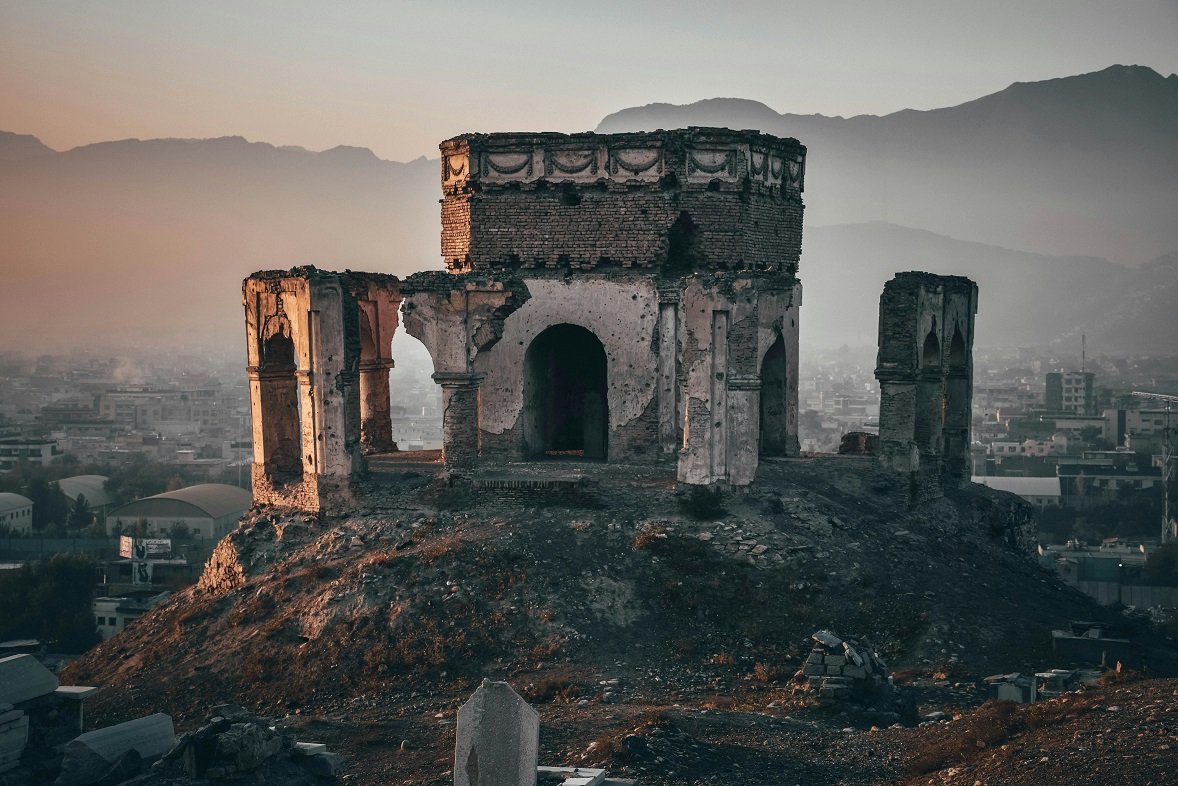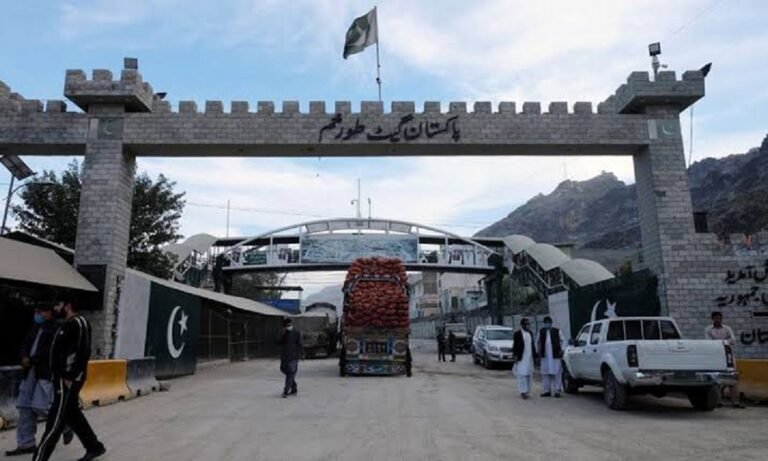In September 2025, Afghanistan was pushed into a new kind of isolation. It was Afghanistan’s Digital Blackout. Taliban leaders, led by Supreme Leader Hibatullah Akhundzada, ordered a large-scale ban on fiber-optic Wi-Fi internet across many provinces. The restrictions started in Balkh on September 15–16 and then spread to Baghlan, Badakhshan, Kunduz, Takhar, Nangarhar, Kandahar, and soon to other areas.
The Taliban said the ban was needed to stop “immoral activity” and block access to forbidden content. But for millions of Afghans, this move was far more damaging. It cut off their last connection to education, work, and the outside world. It was another blow after decades of US upheaval in Afghanistan.
Smartphones in the Taliban’s Crosshairs
In mid-September, Akhundzada went even further. He asked clerics in Kandahar to issue a religious ruling (fatwa) that would completely ban smartphones. His goal was clear: stop criticism, silence people, and tighten control over information.
The clerics refused to approve a full ban, warning that it would create chaos. So, the Taliban shifted to partial restrictions instead—blocking fiber-optic Wi-Fi while keeping mobile internet available, though weak and costly. At the same time, Akhundzada banned all smartphones and even regular phones near his residence in Kandahar, showing the deep fear of Taliban leaders.
For ordinary Afghans, the message is simple: their digital freedom is shrinking little by little.
By late September 2025, there was still no word on when, or if, Wi-Fi would return. Taliban officials only spoke vaguely about building a “domestic internet” for basic use, but they gave no plan or details.
Mobile data still works, but it is weak, expensive, and under threat. Some reports suggest it might soon face filtering, rationing, or even a complete ban. For now, Afghans must rely on unstable mobile networks—a poor replacement for fast Wi-Fi.
Women Lose Their Last Lifeline
The group hit hardest by the internet ban is Afghan women and girls. Over the past four years, the Taliban have shut down their schools, universities, and jobs. The internet was the only space left where women could learn, earn, and connect with the outside world.
– Online Education: Girls locked out of classrooms studied through online universities, language lessons, and coding classes. Without Wi-Fi, those doors slam shut.
– Remote Work: Women who worked as tutors, designers, translators, or artisans online are losing their income. Families that depended on this money are falling deeper into poverty.
– Activism and Connection: The internet gave Afghan women a way to share their stories and organize for their rights. Now, that voice is silenced.
This is not just about technology. It is about erasing women from every space—schools, workplaces, and now even the digital world.
Men and the Collapse of the Digital Economy
The Taliban’s ban has also destroyed opportunities for Afghan men, especially young people who built their lives around the online economy.
- E-commerce Shutdown
Thousands of small shops on Facebook, Instagram, and WhatsApp can no longer work. Sellers of clothes, electronics, books, and services are losing customers daily. - Freelancing Blocked
Afghanistan had become a rising hub for freelancing. Young men worked on platforms like Upwork and Fiverr, serving international clients in IT, design, and marketing. With unstable internet, those jobs are gone. - Banking and Digital Payments Disrupted
E-commerce relied on mobile banking and digital payments. Now, poor connections stop transactions, breaking trust in online business. - Youth and Innovation Crushed
Afghan youth, once full of energy and ideas, had started small startups. The bans suffocate that spirit and push many to either give up or leave the country. - Economic Isolation
Without internet, Afghanistan is cut off from the global economy. Entrepreneurs can’t trade, freelancers can’t work, and students can’t learn. The country sinks deeper into poverty and dependency.
What Afghanistan Lost: A Digital Growth Story Cut Short
Before the bans, Afghanistan’s online economy was one of the few success stories during years of crisis.
2020–2022: Digital Growth
– The World Bank and Payoneer ranked Afghanistan among the fastest-growing freelance markets in South Asia.
– Afghan freelancers earned an estimated $100–150 million annually through programming, design, translation, and marketing.
– Social media shops on Facebook and Instagram thrived in Kabul, Herat, and Mazar.
– Women sold embroidery, clothes, and crafts, while others taught coding, English, or Quran lessons online.
– Affordable fiber-optic Wi-Fi made all this possible.
2022–2025: Collapse
– With Taliban restrictions, freelancers lost clients, shops disappeared, and online education stopped.
– Families lost digital incomes and slipped into unemployment.
– Skilled youth began migrating, adding to brain drain.
– Women were cut off from even remote chances at education or work.
In just three years, Afghanistan went from a growing digital economy to nearly complete blackout.
Afghanistan’s Digital Blackout: The Human Dimension
In 2021, the Taliban’s takeover of Afghanistan didn’t seem very easy. However, the later events showed that they had much stronger base in the country at the moment. Still, it was expected that the regime will learn from the past and create ease for the masses. Instead, there was pain. Statistics show the loss, but the human pain tells the real story.
– A teenage girl in Kandahar once took online English lessons because her school was closed. Now, without Wi-Fi, her education is slipping away.
– A young man in Kabul built a small Facebook shop selling phone accessories. It supported his family, but now it is invisible, and his income is gone.
– A freelancer in Herat once earned money coding for global clients. Today, his projects are canceled, and his profile is silent.
These are not isolated cases. Across Afghanistan, families are falling into despair, and dreams are dying.
Why the Taliban’s Ban Matters Globally
The Taliban say the internet spreads immorality amid Afghanistan’s Digital Blackout. But experts and rights groups argue that the real reason is political: controlling information, blocking dissent, and shrinking public space.
– For women, it removes their last chance at learning and earning.
– For men, it kills entrepreneurship and innovation.
– For the whole country, it deepens economic collapse and isolation.
Even the Taliban cannot escape the damage. No government in today’s world can function without digital infrastructure. By cutting off the internet, they weaken their own rule.
Looking Ahead: No End in Sight
The most frightening part is the uncertainty. There is no timeline for when Wi-Fi will return. Taliban leaders give only vague promises of “alternatives” with no clear plan. Mobile data is still there, but for how long is unknown.
Rights groups warn that unless there is outside pressure, the blackout could become permanent. If that happens, Afghanistan could become one of the most digitally isolated countries in the world.
Women’s Online World: Silenced Dreams
Among the most painful losses in Afghanistan’s Digital Blackout is the erasure of women’s online spaces. Many young women had found independence through Instagram shops, graphic design work, or blogging.
– Online Shops:
– Sana, 21, in Kabul, sold handmade jewelry through Instagram. “Every time someone bought from me, I felt like I was part of the world. Now my shop is gone. I feel like I am back in a cage.”
– Farzana, a student in Herat, painted tote bags and sold them online. “It was my voice. Without internet, no one hears me.”
– Graphic Designers and Freelancers:
– Nooria, 19, from Mazar, taught herself Photoshop and designed posters and logos for local and international clients. “It gave me hope. But without Wi-Fi, my skill is useless.”
– Bloggers and Storytellers:
– Laila, 22, from Nangarhar, ran a cooking blog. “It was my way to celebrate Afghan culture. Now I cannot even post a recipe. It feels like my kitchen has gone silent.”
For these women, the ban is not just about losing the internet. It is about losing identity, independence, and hope. What little space they had in a country that locked them out of schools and jobs has now been closed too.





